What is Japanese Wagashi?
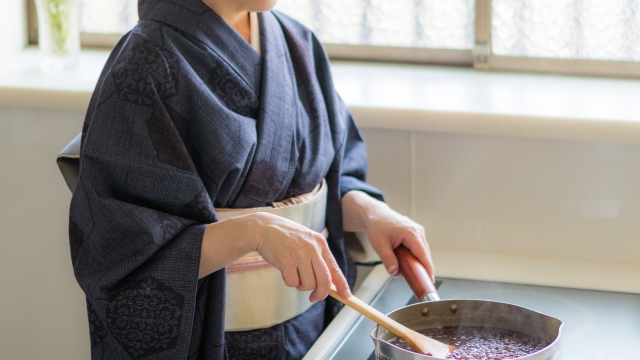
Japanese wagashi, or “wa-ga-shi,” refers to traditional Japanese sweets, which are sweet desserts known for their beautiful appearance and flavors. Wagashi reflects Japanese culture and the changing seasons, with various types enjoyed on different occasions and times of the year. These sweets play an essential role in Japan’s tea culture and are becoming increasingly appreciated by foreigners.
Characteristics and Beauty of Wagashi
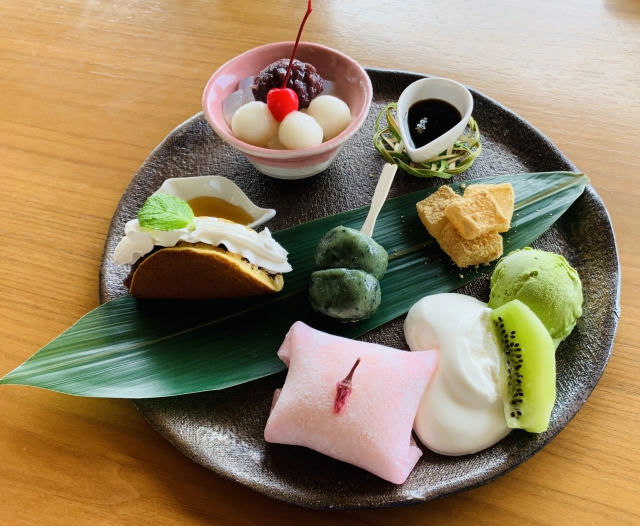
Wagashi is renowned for its striking visual appeal. These colorful sweets often represent the changing seasons and elements of nature, using vibrant hues, flowers, leaves, and symbols of the season. Additionally, wagashi is associated with religious events and traditions, and its designs and patterns carry deep symbolic meanings.
Seasonal Wagashi

Japanese wagashi changes with the seasons. In spring, you have sakura mochi, in summer, kakigori (shaved ice), in autumn, tsukimi dango, and in winter, yakiimo (roasted sweet potatoes). These seasonal wagashi celebrate the beauty of Japan’s nature and the changing seasons, offering a wonderful way for foreigners to experience Japan’s four seasons.
Representative Wagashi
There are many types of wagashi (Japanese sweets), but here are some of the representative ones.
Anko(あんこ)
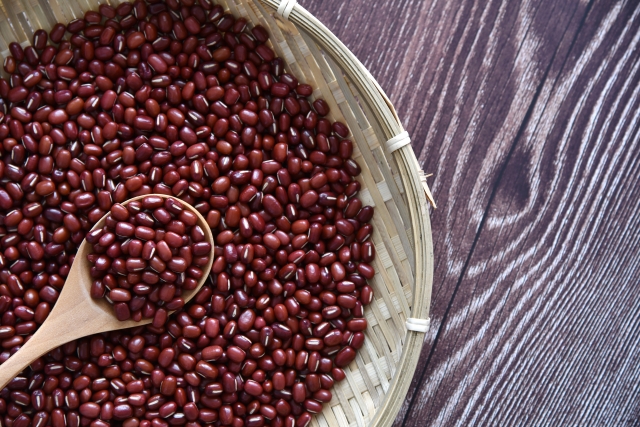
Anko is typically made from sweet red or white bean paste, primarily using azuki beans. This anko is used in various traditional Japanese sweets, including daifuku, dorayaki, oshiruko, and a variety of other wagashi.
Sakura mochi(桜餅)
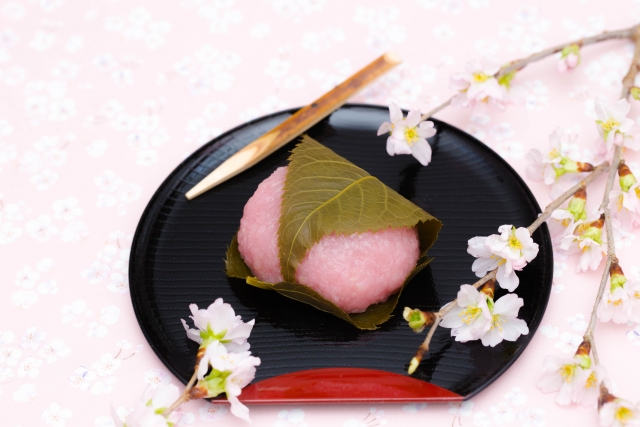
Sakura mochi is a beautiful wagashi that evokes the arrival of spring. It consists of a chewy mochi exterior filled with sweet anko (red or white bean paste) and wrapped in a cherry blossom leaf. The delicate flavor of cherry blossoms and the mochi’s texture harmonize exquisitely, making it a beloved confection that symbolizes spring in Japan.
Kakigori(かき氷)

Kakigori is an essential wagashi during hot summer days. It’s a simple yet refreshing dessert made by shaving ice and drizzling it with syrup, offering a wide range of flavors. Moreover, there are many variations of kakigori with various toppings and anko (sweet red bean paste) options to choose from.
Tsukimi dango(月見団子)
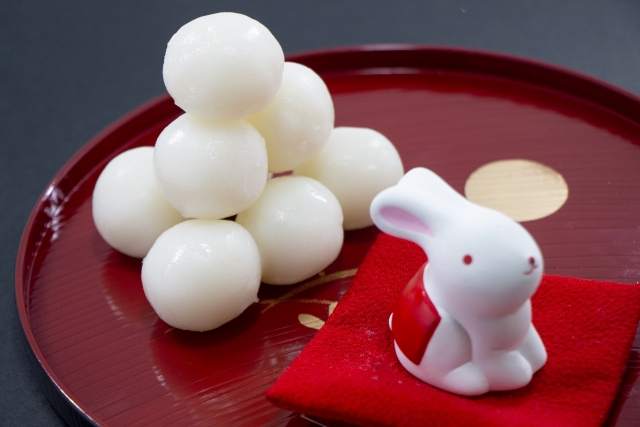
Tsukimi dango is a traditional Japanese confection associated with the Japanese moon-viewing festival. These are dumplings with sweet anko (red bean paste) inside, and they are typically shaped to resemble the full moon. It’s a beloved symbol of autumn in Japan, where people enjoy tsukimi dango while appreciating the moon as part of the tradition.
Yakiimo[roasted sweet potatoes](焼き芋)

Yakiimo, or roasted sweet potatoes, are a delightful Japanese confection that becomes especially popular in the autumn. Made by roasting satsumaimo (Japanese sweet potatoes), they offer a combination of a crispy exterior and a soft, sweet interior. Yakiimo’s sweet aroma is often wafting through the streets and festivals in Japan during the fall, making it a beloved and easy-to-enjoy seasonal treat.
Monaka(もなか)
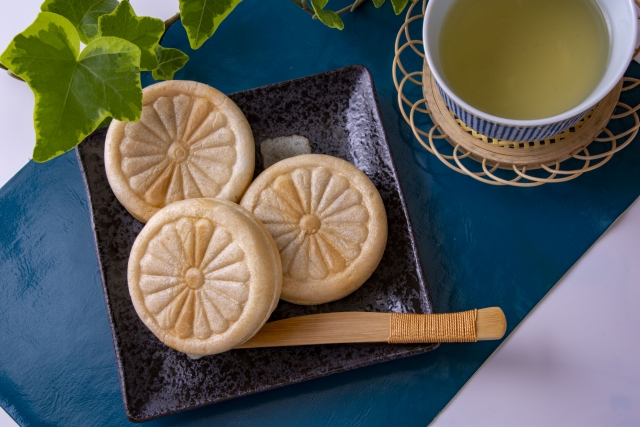
confectionery consisting of a crispy shell made from mochi (rice cake) and filled with sweet anko (red bean paste). Monaka comes in various shapes and designs, often featuring seasonal motifs like chrysanthemums or plums. There are also cute animal-shaped monaka and a wide range of other creative variations. It’s a delightful and versatile treat enjoyed in Japan.
Dorayaki(どら焼き)
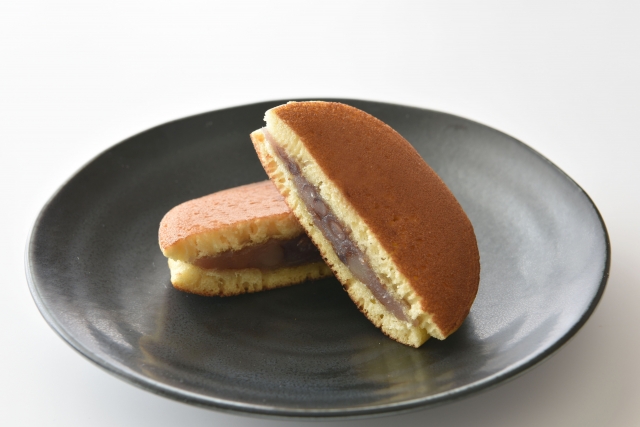
Dorayaki is a traditional Japanese confectionery consisting of two fluffy wheat flour pancakes that sandwich sweet anko (red bean paste). The soft, moist texture of the pancakes is a distinct feature, and the balance of sweetness with the anko makes it a beloved treat for people of all ages in Japan. Dorayaki is typically round and often has a browned surface. Common variations include fillings other than anko, such as cream. Additionally, it’s interesting to note that the character “Doraemon” from anime and manga is known to be fond of dorayaki, and the treat’s name is said to be partially inspired by this association.
Youkan(ようかん)
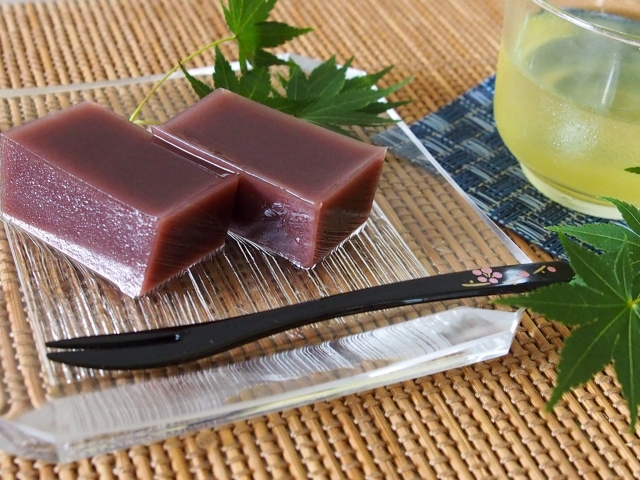
Youkan is a Japanese confectionery known for its moist and chewy texture. It is typically made from koshian (smooth sweet red bean paste) or tsubuan (coarse sweet red bean paste). Koshian and tsubuan are primarily prepared by simmering azuki beans to create the unique sweetness and flavor of youkan. This traditional Japanese sweet is usually in a rectangular or square shape and is often decorated with beautiful patterns and designs. Youkan is widely loved in Japan as a traditional accompaniment to tea ceremonies and is commonly given as a gift.
Warabimochi(わらび餅)
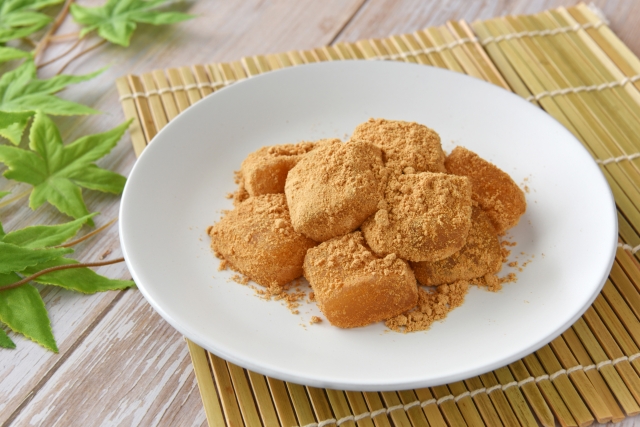
Warabimochi is a Japanese confectionery made primarily from bracken starch (warabiko) and is known for its chewy texture. Bracken starch is derived from the rhizomes of the bracken plant and has a unique, refreshing green color. This confection is typically shaped into small, cut, cube-like pieces and dusted with kinako (roasted soybean flour) on the surface. Warabimochi is especially popular during the summer, with its vibrant appearance and chewy texture making it a perfect treat for the hot season. It is enjoyed as part of traditional Japanese tea ceremonies and confectionery and is loved for its elegant flavor.
Taiyaki(たい焼き)
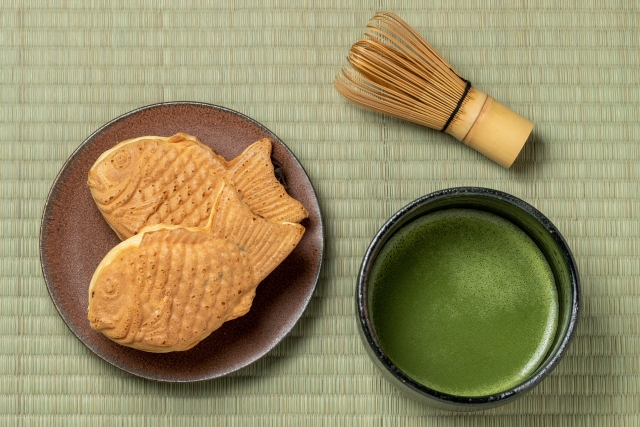
Taiyaki is a fish-shaped baked confectionery filled typically with sweet red bean paste (anko) or custard cream. This Japanese confection features a crispy, freshly baked outer shell and is filled with sweet and slightly bittersweet anko or custard cream on the inside. Its fish-shaped appearance is traditional, where two freshly baked pancake-like batter shells are folded into the shape of a fish, with the filling inside. The aroma and appearance of taiyaki are quite appetizing, and it is widely available at Japanese street stalls and cafes. It’s also a popular snack at Japanese festivals and special occasions, enjoyed by people of all ages.
Zenzai(ぜんざい)
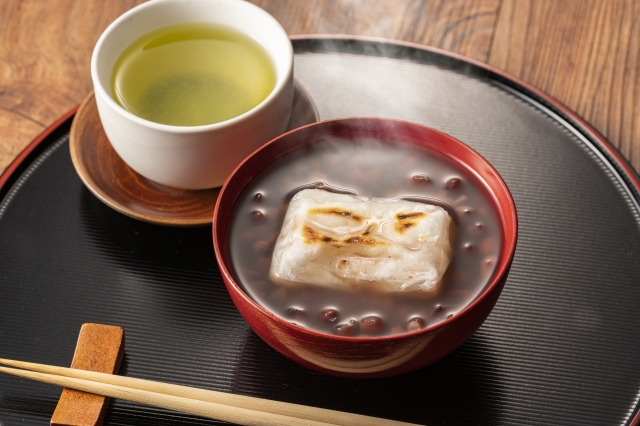
Zenzai is a Japanese dessert primarily consisting of anko(sweet red bean paste), and azuki beans. It’s especially popular during cold seasons. This sweet treat is known for its warm and sweet flavors, usually featuring koshian or tsubuan (types of anko). Zenzai provides not only a comforting sweetness but also helps warm the body, making it particularly beloved on chilly days. A bowl of zenzai may include chewy chestnuts, mochi (rice cakes), or seasonal toppings, offering both visual appeal and a taste of the season. Additionally, zenzai is cherished as part of Japan’s traditional culture and celebrations, making its warmth and sweetness appreciated by many people.
How to enjoy wagashi
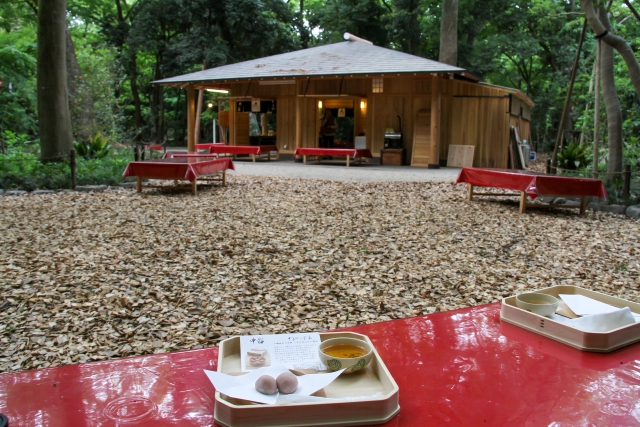
There are various ways to enjoy wagashi (traditional Japanese sweets), and here are some methods to fully appreciate their deliciousness. Let’s take a closer look at ways for foreign tourists to savor the charm of wagashi.
Purchase at Cafes and Wagashi Shops
Many cafes and wagashi (Japanese sweets) shops in Japan offer a wide variety of wagashi. You can visit these places and choose your favorite wagashi to enjoy. When ordering wagashi at a cafe, it is often presented with beautiful plating or as a seasonal dessert.
Traditional Tea Ceremonies
Certainly, the best way to enjoy wagashi is at a traditional Japanese tea ceremony. If you have the opportunity to participate in a tea ceremony, you can savor authentic wagashi there. The finest selection of wagashi is offered at the tea ceremony, and it harmonizes perfectly with tea. Such an experience provides an excellent opportunity to feel the aesthetics and customs of Japan.
Participating in Wagashi-Making Workshops
During your stay in Japan, participating in a wagashi-making workshop is also a wonderful way to enjoy wagashi. In these workshops, you can learn the basics of wagashi making from expert artisans and create your own wagashi. This is an excellent opportunity to understand the process of making wagashi and experience its beautiful appearance and delicate flavors.
Enjoying the Seasonal Changes with Wagashi
Wagashi that celebrate the changing seasons are adapted to each season, allowing you to fully appreciate Japan’s seasonal traditions and sensations. During the cherry blossom season, you can enjoy sakura mochi, and in autumn, chestnut-flavored wagashi. This provides a delightful variety of seasonal treats throughout the year.
Enjoying Wagashi with Creative Twists
You can also get creative with wagashi and enjoy them in different ways. For instance, you can savor them with matcha green tea, pair them with fruits, or even combine them with ice cream to create your own unique style of enjoying these traditional Japanese sweets.
The Cultural Significance Behind Wagashi
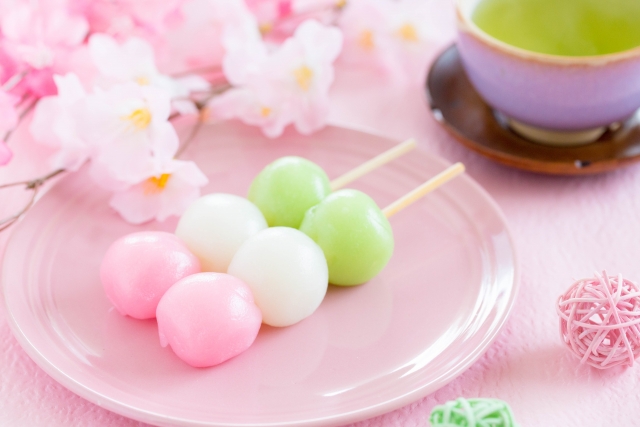
Wagashi is deeply rooted in Japanese culture, drawing from traditional aesthetics and the changing seasons. Here’s a specific explanation of how wagashi is intricately connected to Japanese culture.
Seasonal Expressions
Wagashi is frequently used to depict the transitions between seasons. Different types of wagashi are crafted to align with spring, summer, autumn, and winter, with their flavors and designs mirroring the characteristics of each season. For instance, wagashi designed in the likeness of cherry blossoms are favored in spring, while those evoking images of autumn foliage are savored in the fall. By indulging in these wagashi, people can appreciate the beauty of the seasons.
Festivals and Celebrations
Wagashi plays an indispensable role in Japanese festivals and celebrations. In many festivals and celebratory events, wagashi serves a special purpose, symbolizing luck and warding off evil. Much like the way different flowers bloom with each season, wagashi takes on various forms with the changing seasons, featuring cherry blossoms in spring and chrysanthemums in summer, for example. These wagashi are used in household and community celebrations, enjoyed as part of Japanese culture and festivities.
Part of the Tea Ceremony
The Japanese tea ceremony, known as “chanoyu” or “sado,” is a traditional ritual of preparing and serving matcha (green tea). Wagashi is an integral part of the tea ceremony. The wagashi served during a tea gathering are carefully chosen to complement the specific tea ceremony and are often selected to match the season. Participants in the tea ceremony enjoy a serene moment while savoring wagashi and matcha, making it an essential aspect of the tea ceremony’s experience.
Religious Significance
Wagashi is also associated with religious rituals. It plays a role in Buddhist ceremonies during events like Obon and Higan, which are dedicated to honoring deceased ancestors. Wagashi is offered to welcome and appease the spirits of the departed. Additionally, at Shinto shrines during various rituals and ceremonies, wagashi is presented as an offering to the deities. This shows how deeply ingrained wagashi is in Japan’s religious traditions.
These elements are deeply intertwined with wagashi, and wagashi reflects many cultural aspects of Japanese culture, such as aesthetics, the changing seasons, festivals and celebrations, the way of tea (chanoyu), and religious ceremonies. When foreigners try wagashi, delving into the cultural meanings and history behind these treats can enhance the enjoyment of their flavors.
In summary
Wagashi is a wonderful food that symbolizes the beautiful traditions and culture of Japan. Its exquisite appearance and flavors have captivated people, including foreigners, and visitors to Japan have the opportunity to fully savor its charm. Trying wagashi is a fantastic way to experience Japanese culture and enjoy delicious traditional sweets. When visiting Japan, be sure to explore the beauty and diversity of wagashi. By enjoying seasonal wagashi, you can fully appreciate the beauty of Japan’s changing seasons.
Furthermore, wagashi plays an essential role in Japanese culture and traditions, such as in tea ceremonies and celebrations. Therefore, when trying wagashi, it’s important to learn and respect the cultural background behind it. Each bite of wagashi encapsulates Japanese landscapes and culture.
Lastly, while savoring the beauty, flavors, and cultural significance of wagashi, I recommend enjoying wagashi as a wonderful way to experience Japanese tea culture and traditions. Exploring the world of wagashi is an excellent means to deepen your understanding of Japan’s beautiful traditions and appreciate its charm more profoundly. For foreign tourists, wagashi offers a fantastic way to connect with Japan’s beautiful culture. I hope this article has sparked your interest in the world of wagashi, and I wish you enriching and memorable experiences as you explore Japan’s rich traditions and culture through the enjoyment of these traditional sweets.


Comment Comment